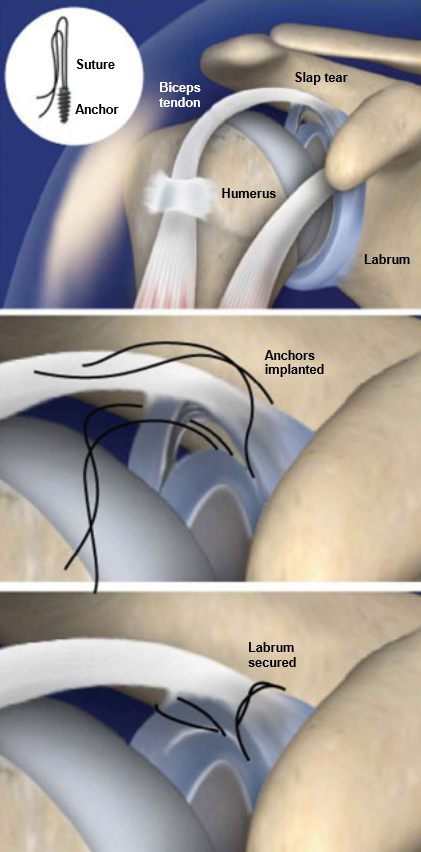Overview
This arthroscopic procedure is performed to repair a tear of the biceps tendon at the point where it connects to the labrum, a ring of cartilage that surrounds the shoulder socket. A tear at this point is called a SLAP (Superior Labrum Anterior-Posterior) tear. SLAP repair is performed under general and regional anesthesia, and patients usually leave the hospital the same day.

Accessing the Joint
The patient is positioned, and the shoulder is cleaned and sterilized. The surgeon creates a few small incisions in the shoulder. An arthroscopic camera is inserted through one of the incisons. The others will be used as access points for other arthroscopic tools.
Implanting the Anchors
After any loose bits of tissue are removed, the surgeon drills a small hole into the glenoid bone where the labrum has torn away. A tiny anchor tied to a suture is implanted in the glenoid bone. Some tears may be repaired with just one anchor, others require multiple anchors.
Repairing the Labrum
The surgeon ties the sutures around the torn labrum, reattaching it firmly to the glenoid. If the tendon cannot be repaired, it is released.
End of Procedure and Aftercare
The instruments are removed and the incisions are closed and bandaged. Patients generally require a sling for two to four weeks after the procedure. Physical therapy will be required to strengthen the joint. Most patients can regain normal activities within three to six months.
